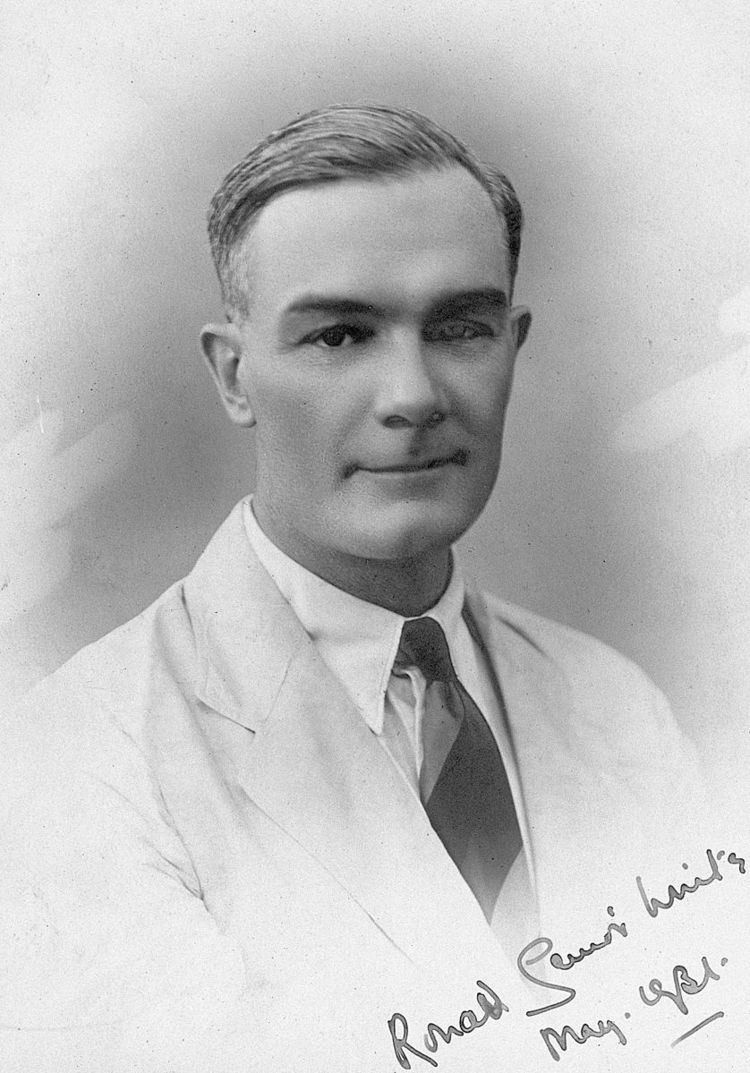Ronald A. Senior-White (1891–1954) was an English entomologist and malariologist who worked in India and Ceylon. His entomological studies concerned Diptera.
Indian Diptera (MemAgr) (1922)New Ceylon Diptera (Part II). Spolia Zeylan. 13: 195–206. (1922)Notes on Indian Diptera. 1. Diptera from the Khasia Hills. 2. Tabanidae in the collection of the forest zoologist. 3. New species of Diptera from the Indian Region. Mem. Dep. Agric. India Entomol. Ser. 7: 83–170. (1922)[This work was issued as an entire fascicle (No. 9) and is preceded by 6 pages consisting of title page and other matter.]The Muscidae testaceae of the Oriental Region. (With descriptions of those found within Indian limits.). Spolia Zeylan. 12: 294–314. (1923)A revision of the sub-family Sarcophaginae in the Oriental Region. Rec. Indian Mus. 26: 193–283. (1924).New and little known Oriental Tachinidae. Spolia Zeylan. 13: 103–19. (1924).A revision of the sub-family Calliphorinae in the Oriental Region. Rec. Indian Mus. 28: 127–40. (1926.)With D. Aubertin & J. Smart Diptera. Family Calliphoridae. In: Sewell, R.B.S., ed., The fauna of British India, including the remainder of the Oriental Region. Vol. VI. Taylor & Francis, Ltd., London. xii + 288 p. (1940).Physical factors in mosquito ecology. Bulletin of Entomological Research, 16, 187–248. (1926)With Knowles, Robert, Malaria: Its Investigation and Control, with Special Reference to Indian Conditions. Calcutta: Thacker, Spink and Co. ( 1927).With Hackett L.W., Russell P.F. and Scharff JW The present use of naturalistic measures in the control of malaria. Bulletin of the Health Organisation of the League of Nations, Vol 7, pp 1046–1064. (1938)With Adhikari AK, On malaria transmission around the Chilika lake. J. Mal. Inst. India 2: 395–423. (1939).On the anthrophilic indices of some Anopheles found in east central India. Indian J. Malariol. 1947; 1 : 111–222. (1947)With Kirkpatrick, T.W.Transport of insects on the exterior of aircraft. Nature 164 (1949) 60 – 61. (1949).Studies on the bionomics of Anopheles aquasalis Curry, 1932. Part I. Indian J. Malariol. 5: 293–403. (1951).Studies on the bionomics of Anopheles aquasalis Curry, 1932. Part II. Ind J Mal 6: 30–72. (1951).With Das Gupta, B.M. Studies in the parasitology of malaria. Indian Med. Res. Memoirs No. 18:1–436. (1930)."This [Hackett L.W., Russell P.F. and Scharff J.W., 1938] may be old, but it was written by a panel of the world's most highly experienced malariologists, just before the advent of synthetic residual insecticides, when environmental approaches and techniques were still "mainstream" Afronets 2000.
"Railway construction in the tropics is nearly always associated with fulminent epidemics of malaria—"a death a sleeper" is the generalisation on the happenings" (Senior-White, 1928)
"Urban areas can be divided into two zones: the central zone, where the lack of suitable standing water renders vector reproductionextremely rare and where malaria transmission is significantly reduced compared to more rural areas, and the periurban areas, where increased population density and poor sanitation provide a more hospitable environment for vector reproduction. Malaria transmission in periurban areas is particularly problematic where the resident populations are migrants displaced from more malaria endemic rural areas (see also Nájera JA, BH Liese, and J Hammer (1992) Malaria: New Patterns and Perspectives World Bank Technical Paper no. 183. After this principle was understood, according to Litsios, R. Senior White speculated that [in England] it had been the introduction of turnip culture in the middle of the [19th] century to provide winter food for cattle, which by saving the herds from annual slaughter had initiated improvements in animal husbandry effectively reduced a by distracting vector mosquitoes and therebydampened the transmission of the disease".

